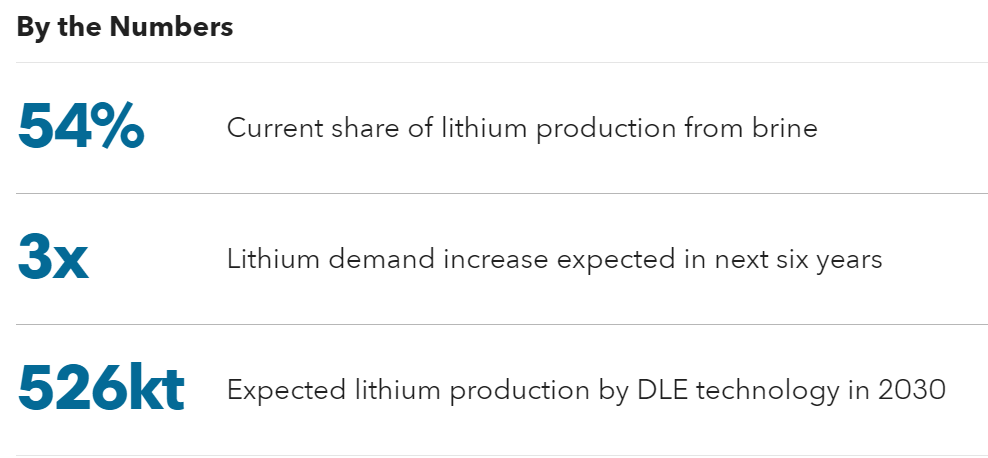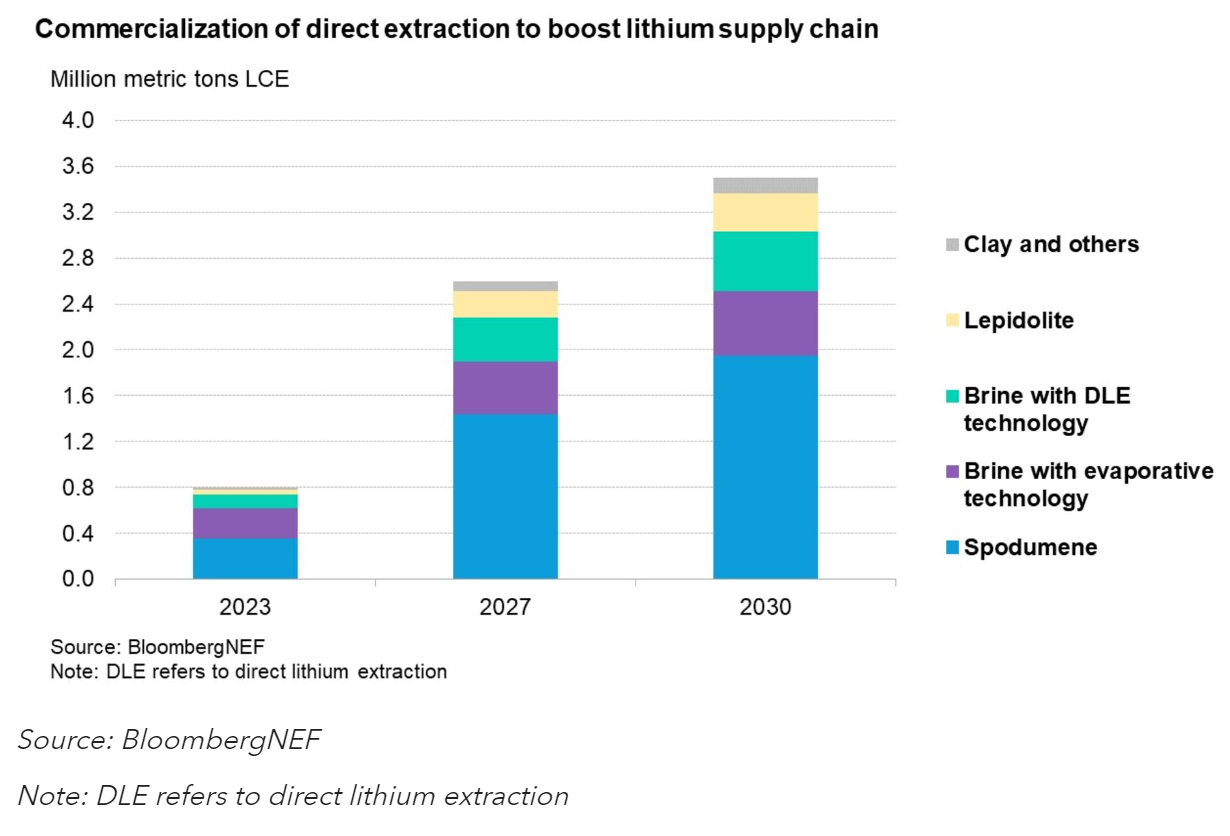Lithium is a critical metal of the energy transition. However, its mining technology has not changed for decades. The current evaporative method has a low recovery rate of around 40% to 60% and is criticized for its environmental impact. To meet lithium demand sustainably, many companies are jumping to a new technology – direct lithium extraction or DLE – to efficiently extract lithium. If successfully commercialized, we expect the supply of lithium from evaporation and DLE technology will be comparable by 2030.


- Lithium can be extracted from hard rocks (spodumene and lepidolite) and brines. The main hurdle of evaporative technology is the time it takes to recover lithium – up to 18 months.
- DLE overcomes this time issue by cutting production time to extract lithium from brine to two weeks. Also, it minimizes environmental impact by needing less land and using water more efficiently than the evaporative method.
- Despite the crash in lithium prices, companies are continuing to develop and invest in DLE technology to extract lithium from brine. The global share of lithium production from brine sources is about 54% out of 790 kilo metric tons (kt) of lithium carbonate equivalent (LCE) in 2024.
- Lithium demand is expected to increase to 3 million metric tons LCE by 2030 from 1.2 million metric tons LCE in 2024 – almost triple the current demand within six years. DLE production is expected to increase to 526kt LCE by 2030 from 140kt LCE in 2024. Evaporative technology source is likely to increase from 321kt LCE in 2024 to 563kt LCE in 2030.
- BloombergNEF assessed 10 lithium miners on their DLE technology development levels based on our technology framework.
BNEF clients can access the full report here.